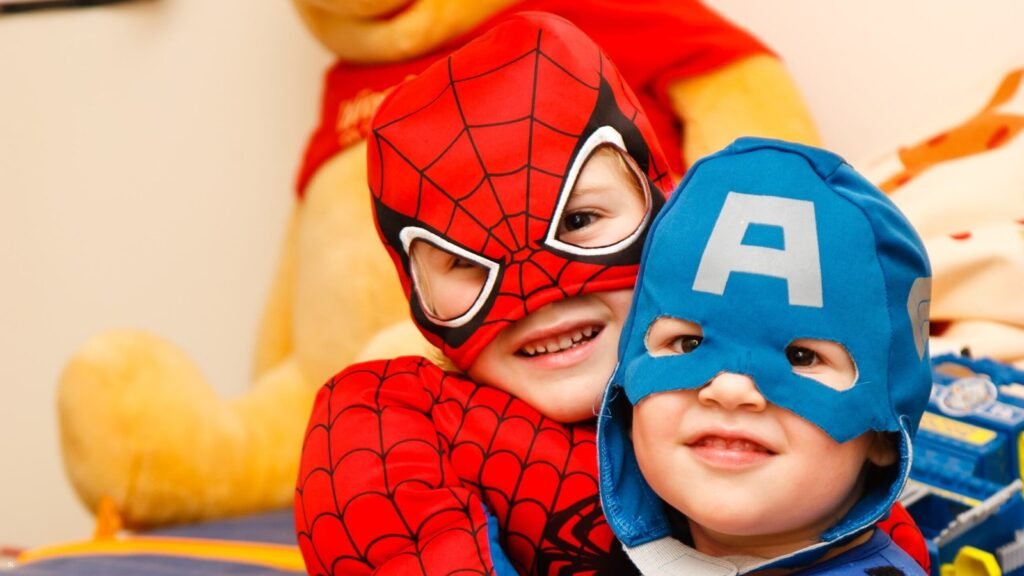As parents, we want to keep our children safe but also allow them to explore and learn about the world. However, it can be frustrating when our little ones seem intent on getting into anything and everything, no matter how many times we tell them “no.” Why do they insist on opening cabinets, pulling books off shelves, unloading the dishwasher, and more? There are a few key reasons for this natural child behavior.
Developmentally Appropriate Curiosity
Toddlers and young children are in the process of rapidly developing and learning. Their brains are wired to be curious about their surroundings, so they can understand how things work. Getting into objects allows them to examine textures, sounds, functions, and more with their senses. This hands-on exploration is developmentally appropriate and important for their cognitive growth. Trying to restrict it too much could stunt their learning.
Toddlers and young children are in the process of rapidly developing and learning. Their brains are wired to be curious about their surroundings, so they can understand how things work. Getting into objects allows them to examine textures, sounds, functions, and more with their senses. This hands-on exploration is developmentally appropriate and important for their cognitive growth. Trying to restrict it too much could stunt their learning.
Testing Boundaries
Children also enjoy testing limits to see what they can and can’t do. Pushing boundaries is normal at this stage as they develop independence and decision-making skills. While frustrating for parents, it’s important for establishing their sense of autonomy. Gently but firmly enforcing consistent rules helps guide this testing in a positive way.
Children also enjoy testing limits to see what they can and can’t do. Pushing boundaries is normal at this stage as they develop independence and decision-making skills. While frustrating for parents, it’s important for establishing their sense of autonomy. Gently but firmly enforcing consistent rules helps guide this testing in a positive way.
Lack of Impulse Control
The prefrontal cortex, which governs decision-making and impulse control, is not fully developed in young kids. This makes it difficult for them to resist temptation when something intriguing is within reach. It’s not that they aren’t listening; their brains simply aren’t wired for restraint yet. Staying one step ahead helps avoid situations where lack of control could be an issue.
The prefrontal cortex, which governs decision-making and impulse control, is not fully developed in young kids. This makes it difficult for them to resist temptation when something intriguing is within reach. It’s not that they aren’t listening; their brains simply aren’t wired for restraint yet. Staying one step ahead helps avoid situations where lack of control could be an issue.
Seeking Attention
For some children, getting into mischief may partly be a bid for parental attention. A brief scolding is still a form of interaction. Ignoring off-limit behaviors and praising on-task behaviors can help shift focus to more positive behaviors.
For some children, getting into mischief may partly be a bid for parental attention. A brief scolding is still a form of interaction. Ignoring off-limit behaviors and praising on-task behaviors can help shift focus to more positive behaviors.
The Good News
The good news is that as children mature, their natural curiosity remains but becomes better regulated. Their prefrontal cortex develops more fully between ages 3-5, improving judgment. Setting up a safe, engaging environment and establishing clear rules with consistency and patience helps channel their inquisitive nature in a constructive way during these learning years. The phase shall pass!
A few things that can help satisfy their curiosity safely are:
Childproof your home as much as possible. Use gates, locks, cabinets—anything to prevent access to dangerous items. Out of sight is out of mind for little explorers.
Provide engaging toys they’re allowed to touch. Keep a basket of favorites nearby so you can redirect their attention when they start eyeing something they shouldn’t have.
Give simple explanations for boundaries. For example, “books are for reading, not mouthing.” Keep it short so they understand without getting frustrated.
Offer choices between safe options. Say “ball or book?” so they feel in control of their environment.
Designate a “yes” play area where they’re free to investigate toys and books without restriction. Satisfies curiosity in a low-risk way.
Stay patient – it takes time for toddlers to understand limits. As long as you’re consistent with rules, they’ll learn what’s okay to explore. Let me know if any part needs more detail!
Real-Scenario Example
I know how challenging it can be when your little one seems determined to explore every nook and cranny of your home. Just the other day, I caught my two-year-old trying to climb the kitchen cabinets again while I was making dinner. I had to resist the urge to sigh in frustration, take a deep breath, and gently redirect her attention.
What has worked best for me in situations like that is to get down on her level, make eye contact, and use a calm yet firm tone to remind her of the house rules. “Cabinets are not for climbing. It’s dangerous up there. What else could you play with instead?” She usually responds well when I offer an engaging alternative, like looking at books together at the table.
Consistency is so important too. I’ve found it really helps to go over limits in the same way each time, without getting angry or raising my voice. My daughter is learning, slowly but surely, what she can and can’t touch in our home. And on the days where her curiosity seems to know no bounds, a hug and some one-on-one playtime to burn off energy goes a long way.
Facebook
Twitter
Reddit
WhatsApp
FOR MORE VALUABLE TIPS BUY OUR PARENTING COURSES https://www.kidzoot.com/courses/
CONSULT YOUR PERSONAL PARENTING SOLUTIONS VIA APPOINTINTMENT AT https://www.kidzoot.com/appointment-booking/
Follow Us on Twitter www.twitter.com/kidzootworld

